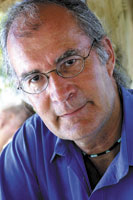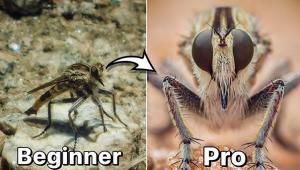Who’s Your Favorite Photographer?
The query, "Who's your favorite photographer?" has to be among
the top three icebreakers (can you name the other two?) amid photographers.
It's not a popularity contest, per se, but more a seeking of what images
inspire you and whose point of view you admire and, at one point in your creative
work, who you might like to emulate. This might vary according to your specific
field of interest. Landscape photographers might say Ansel Adams or Stephen
Johnson, photojournalists might reply W. Eugene Smith or David Alan Harvey,
while pure printers might favor Michael Kenna or Paul Strand. In each case the
most favored photographers I have heard about are those who in some fashion
combine vision with technique, whose images are enhanced by the medium they
choose, and most especially by the way they translate what they see in their
own unique way.
 If
you have ever seen the original negatives of Adams or Smith you know of what
I'm speaking. They worked their images in painstaking fashion until they
got just the look they desired, and required. For a real glimpse into just what
it takes read Jim Hughes' excellent biography of Smith. And to see how
vision and technique can be mixed in amazing ways check out Kenna's prints.
If
you have ever seen the original negatives of Adams or Smith you know of what
I'm speaking. They worked their images in painstaking fashion until they
got just the look they desired, and required. For a real glimpse into just what
it takes read Jim Hughes' excellent biography of Smith. And to see how
vision and technique can be mixed in amazing ways check out Kenna's prints.
For those who shoot color slides, choice of film and lighting, can have a profound effect on how their vision is translated. Having just had the pleasure of seeing Harvey's work in an amazing slide show at the Santa Fe Photo Workshop I not only admire the vision but also the way he uses lighting to "print" an image directly onto each transparency. People often talk about the immediacy of digital as being one of its most admirable attributes, but there's nothing more immediate than shooting slides, when your exposure is etched on each slide at the moment the shutter is snapped, aided and abetted by processing.
The point is that the most effective images are those that have been run through the internal filter of each photographer in a way that best expresses their vision. And that "filter" is a combination of their own take on the world--a mix of intelligence and savvy and being there--with a knowledge of craft that enhances the image both at the time of exposure and after, when prints are made. Photography is just that, an art and a craft, and without one the other cannot be fully realized. That's what has been most exciting to me about digital--not the new gear and greater and greater megapixel counts--but what it does to allow every photographer to get even more involved with his or her own images.
I'm not talking special effects here, although that can have its place. I'm referring to the ability to get your hands on the "other half" of the process--what happens after the exposure is made. For some, film has and will continue to allow that to happen. But for many more, who may not have the space, time, or disposition to engage in chemical processes, digital allows first for enhancement of images (making the best of lighting, etc.) and then for the personalization of each photograph. Each must find their own "style," for want of a better word, but that search is what the creative process is all about.
Speaking of feedback, I'd like to invite you to get involved with our latest addition to the Shutterbug website, the Forums at: www.shutterbug.com. We've created a series of discussion groups, many of which are hosted by our writers, covering many aspects of photography and imaging, as well as special User Groups for film and digital cameras. Our aim is to provide a unique environment for our unique readers, and allows all of us to meet in the big Internet room. In addition, if you'd like to see a Forum topic added to what we already offer drop us a line. In all, the Forums are there for you to expand your knowledge and join in the worldwide Shutterbug community.

 If
you have ever seen the original negatives of Adams or Smith you know of what
I'm speaking. They worked their images in painstaking fashion until they
got just the look they desired, and required. For a real glimpse into just what
it takes read Jim Hughes' excellent biography of Smith. And to see how
vision and technique can be mixed in amazing ways check out Kenna's prints.
If
you have ever seen the original negatives of Adams or Smith you know of what
I'm speaking. They worked their images in painstaking fashion until they
got just the look they desired, and required. For a real glimpse into just what
it takes read Jim Hughes' excellent biography of Smith. And to see how
vision and technique can be mixed in amazing ways check out Kenna's prints.For those who shoot color slides, choice of film and lighting, can have a profound effect on how their vision is translated. Having just had the pleasure of seeing Harvey's work in an amazing slide show at the Santa Fe Photo Workshop I not only admire the vision but also the way he uses lighting to "print" an image directly onto each transparency. People often talk about the immediacy of digital as being one of its most admirable attributes, but there's nothing more immediate than shooting slides, when your exposure is etched on each slide at the moment the shutter is snapped, aided and abetted by processing.
The point is that the most effective images are those that have been run through the internal filter of each photographer in a way that best expresses their vision. And that "filter" is a combination of their own take on the world--a mix of intelligence and savvy and being there--with a knowledge of craft that enhances the image both at the time of exposure and after, when prints are made. Photography is just that, an art and a craft, and without one the other cannot be fully realized. That's what has been most exciting to me about digital--not the new gear and greater and greater megapixel counts--but what it does to allow every photographer to get even more involved with his or her own images.
I'm not talking special effects here, although that can have its place. I'm referring to the ability to get your hands on the "other half" of the process--what happens after the exposure is made. For some, film has and will continue to allow that to happen. But for many more, who may not have the space, time, or disposition to engage in chemical processes, digital allows first for enhancement of images (making the best of lighting, etc.) and then for the personalization of each photograph. Each must find their own "style," for want of a better word, but that search is what the creative process is all about.
Speaking of feedback, I'd like to invite you to get involved with our latest addition to the Shutterbug website, the Forums at: www.shutterbug.com. We've created a series of discussion groups, many of which are hosted by our writers, covering many aspects of photography and imaging, as well as special User Groups for film and digital cameras. Our aim is to provide a unique environment for our unique readers, and allows all of us to meet in the big Internet room. In addition, if you'd like to see a Forum topic added to what we already offer drop us a line. In all, the Forums are there for you to expand your knowledge and join in the worldwide Shutterbug community.

































